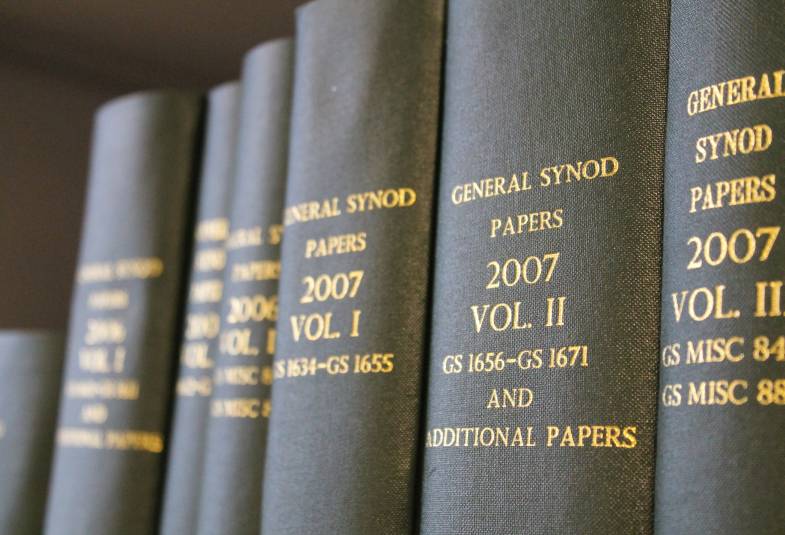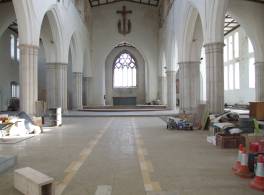Our churches exist to help us worship God, and to show His love to everyone in England.
They are also often historic, important places, and most of them are listed buildings. Because of this there are laws that govern how we manage and care for our buildings.
We can help you understand the rules and get the right permissions to support your worship and mission.
Download our guidance

The Ecclesiastical Exemption
The Ecclesiastical Exemption (Listed Buildings and Conservation Areas) England Order 2010 gives us an exemption from:
- Listed building consent: including separately listed structures within the curtilage (e.g. churchyard walls, railings and monuments)
- Conservation area consent
- Building preservation notices
- Compulsory acquisition of buildings in need of repair
- Urgent works notices
It recognises that church buildings are places of worship. And it allows us to balance mission, worship, and wider community use, with care and conservation.
We only have the exemption on the condition that we maintain our own, equivalent, heritage protection system.
For churches this is the Faculty System, and for cathedrals it is the Care of Cathedrals Measure.
We are not exempt from:
- Planning permission
- Dangerous structure notices
- Advertising consent
- Buildings regulations
- Other secular legislation (e.g. Health & safety)
Faculty Amendment Rules 2022 (Net-Zero)
The Faculty Jurisdiction Amendment Rules 2022 require churches to have due regard to the Church Building Council's advice on net-zero carbon on which proposals for net-zero carbon apply. For these Rules, the following guidance must be given due regard when relevant to your proposal. These links are specific to particular types of proposals, and only relevant guidance needs to be taken into account. The practical path to net-zero is included in the guidance and this must be given due regard for all proposals, as it provides the context to show that the proposal is part of a wider understanding by the parish of its route to net-zero carbon
Although not a document required by the Rules, you may find helpful our Fundraising for Net Zero Carbon and the Environment webpage helpful
The Diocesan Advisory Committee
Your Diocesan Advisory Committee is the first place to ask for advice about works to your church building.
The secretary will be able to advise you:
- If you need permission for the works you want to do
- How to get it
Faculty Rules 2019
New faculty rules formalised by the Rules Committee were submitted and passed by General Synod in July 2019. These new rules amended the 2015 Faculty Rules and with their introduction, saw changes to the works allowed under List A and B items, as well a slight change in how Faculty cases are processed.
An updated flowchart below shows the new faculty process for any case submitted to the courts from the 1st of April 2020.
A more detailed outline of this flow chart is available here
A PDF copy of the new legislation is available here and a Word version is available here
The new items under List A and List B are available here
An overview of diocesan additional matters orders are available here
How will your chancellor make their decision?
If your project causes the loss of historic parts of a listed church, then your chancellor will use a set of questions to decide whether to grant you a faculty or not.
They are called the Duffield questions. They help your chancellor see:
- The impact your plans will have on the building
- The benefits to the mission and worship of your church
If the benefits to your mission are more than the harm you will cause to the historic parts of the building, then the chancellor will usually grant you a faculty.
The Duffield questions are:
- Would the proposals, if implemented, result in harm to the significance of the church as a building of special architectural or historic interest?
- If the answer to question 1 is “no”, the ordinary presumption in faculty proceedings “in favour of things as they stand” is applicable, and can be rebutted more or less readily, depending on the particular nature of the proposals.
- If the answer to question 1 is “yes”, how serious would the harm be?
- How clear and convincing is the justification for carrying out the proposals?
- Bearing in mind that there is a strong presumption against proposals which will adversely affect the special character of a listed building, will any resulting public benefit (including matters such as liturgical freedom, pastoral well-being, opportunities for mission, and putting the church to viable uses that are consistent with its role as a place of worship and mission) outweigh the harm?
In answering question 5, the more serious the harm, the greater the level of benefit needed before the proposals should be permitted. This will particularly be the case if the harm is to a building which is listed Grade l or II*, where serious harm should only exceptionally be allowed.
The Court of Arches has also made four observations on the Duffield Questions which assists in understanding how the questions are used. These observations are:
- Question 1 cannot be answered without prior consideration of what is the special architectural and/or historic interest of the listed church. That is why each of those matters was specifically addressed in Duffield paras 57-58, the court having already found in para 52(i) that “the chancellor fell into a material error in failing to identify what was the special character and historic interest of the church as a whole (including the appearance of the chancel) and then to consider whether there would be an overall adverse effect by reason of the proposed change”.
- In answering questions 1 and 3, the particular grading of the listed church is highly relevant, whether or not serious harm will be occasioned. That is why in Duffield para 56 the court’s analysis of the effect on the character of the listed building referred to “the starting point...that this is a grade I listed building”.
- In answering question 4, what matters are the elements which comprise the justification, including justification falling short of need or necessity (see Duffield paras 85-86). That is why the document setting out the justification for the proposals is now described in rule 3.3(1)(b) of the FJR 2013 as a document “commonly known as a “statement of needs”” (italics added), in recognition that it is not confined to needs strictly so-called.
- Questions 1, 3 and 5 are directed at the effect of the works on the character of the listed building, rather than the effects of alteration, removal or disposal on a particular article.
For more information on these questions please contact us
The two judgements on which this guidance is based are St Alkmund Duffield [2013] Fam 158 and St John the Baptist Penshurst [2015] Court of Arches (Rochester)
Remember:
The more serious the harm, the greater the benefits need to be.
This is especially true for grade I and II* listed churches.
Secular controls
The Ecclesiastical Exemption exempts you from listed building consent. But there are other planning and legal controls that you might need to apply for.
The National Amenity Societies
You may need to consult national amenity societies if your project involves any form of demolition to your listed church. This includes:
- Making new openings in the walls
- Removing historic fixtures and fittings
You should consult them when you have:
- Written your statement of significance and needs
- Taken some initial advice from your Diocesan Advisory Committee
- Put together some early plans
They will want to see how many changes you are planning to the building and how strong your need is to make those changes.
It will be easier to work with them if you think of your early plans as drafts and not as complete.
The relevant national amenity societies are:
- The Ancient Monuments Society: they look at historic monuments and buildings of all periods
- The Council for British Archaeology: they focus on archaeological features in historic buildings of all periods
- The Society for the Protection of Ancient Buildings: they mainly look at buildings prior to 1700, but have an interest in all periods
- The Georgian Group looks at buildings and features of between 1700 to 1837
- The Victorian Society looks at buildings and features of between 1837 and 1915
- The Twentieth Century Society looks at buildings and features of after 1915
Other places of worship subject to faculty
It is possible for some buildings used for Anglican worship to opt into the faculty jurisdiction process.
The “list of places of worship” is set out in paragraphs 38-44 of the Ecclesiastical Jurisdiction and Care of Churches Measure 2018.
It was previously known as the Care of Places of Worship Measure 1999.
They include:
- Buildings used for worship according to the rites and ceremonies of the Church of England
- A chapel which forms part of an Episcopal house of residence
- A chapel or other place of worship owned, leased by, or held in trust for a religious community
- A building which is part of a university, college, school, hospital, Inn of Court, almshouse or other public or charitable institution, and is used for Anglican worship
- A building used for worship, which is subject to a sharing agreement made on behalf of the Church of England in pursuance of the Sharing of Church Buildings Act 1969
Resource Church
The Church Buildings Council wants to support dioceses with proposals for resource churches. It understands that they are an important part of delivering the vision for the ministry of a diocese and that there are particular requirements of the building where it is based. It encourages early engagement of the choice of a building and any necessary proposals to suit it to its new role.
More information on Resource Churches can be found here

